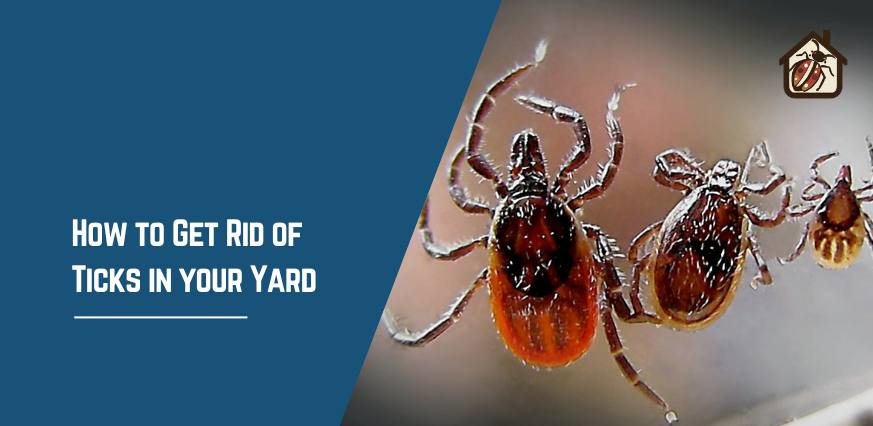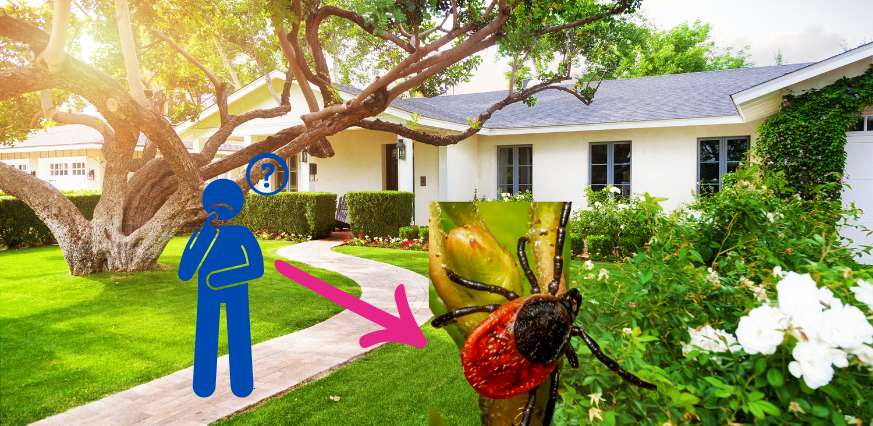
Ticks are minuscule arachnids that can carry a variety of diseases that can harm humans and pets. They can cause havoc in your yard. But worry not! This is a thorough instruction on how to get rid of ticks in your yard and make it a safe sanctuary for you and your loved ones, both furry and not.
Ticks-like regions with thick undergrowth and brush, as well as those with tall grass and leaf litter. They wait patiently for passing hosts on the vegetation. Ticks go through several life stages, feeding on different kinds of animals at each stage. This intricacy highlights the necessity of a multifaceted strategy for tick management.
How to prevent ticks from your yard?

- Modification of Habitat: Mow and edge your grass regularly to keep it looking good. Clear brush piles and leaf litter, then line lawns and forested areas with a three-foot-tall gravel or wood chip barrier.
- Tick-Resistant Plants: Take into account substituting native plants that are inherently resistant to these arachnids with plants that draw ticks.
- Treat dogs: To lower the chance of ticks entering your home, give your dogs year-round medicine that has been recommended by a veterinarian to prevent ticks from biting.
- Personal Protection: Wear long pants and closed-toe shoes outside, especially in high-risk areas. Apply DEET or picaridin-containing insect repellant.
How to control ticks actively?
Natural Methods
Adopting natural tick management techniques might be a practical way to protect your yard and its residents. In this context, three essential materials—garlic spray, cedar oil, and diatomaceous earth—are frequently taken into account.
But it’s important to take caution when using them, taking into account the varying outcomes users have reported as well as any potential drawbacks.
Insecticides
Applying pesticides professionally is a strong way to get rid of adult ticks and their larvae in your yard. This strategy can be quite successful in lowering tick populations, but to protect beneficial insects as much as possible, specific treatments must be used.
While using insecticides can be a powerful weapon in your toolbox for controlling ticks, it’s critical to balance their effectiveness with their environmental impact. Ensuring that your yard is a safe and healthy place for people and beneficial insects alike requires a focused and expert approach.
Biological Control
Including biological control methods in your tick management plan can offer a long-term, reliable answer. Tick natural enemies such as nematodes and predatory mites can be used to control tick numbers in your yard.
Biological management techniques support the ecosystem’s natural checks and balances in your yard and are in line with eco-friendly principles.
These actions may not provide benefits right away, but they will have a lasting effect on tick suppression over time, so include them in your overall tick management plan.
How to monitor ticks?
Regular Inspections
Regular inspections are necessary to keep your yard free of ticks. After spending time outside, make sure you and your dogs are thoroughly checked, especially in locations where there is a high risk of tick activity. During outdoor activities, ticks frequently attach themselves to hosts. It is imperative to promptly identify ticks to mitigate potential health hazards.
Use a systematic approach to examination, paying particular attention to typical hiding places such as hair, exposed skin, and clothing folds. To ensure early detection and eradication of any hiding ticks, this watchful practice serves as an initial line of protection.
Tick Tubes
Tick tubes are a creative and focused way to manage tick populations in particular sections of your yard. A synthetic insecticide called permethrin, which works against ticks is sprayed all over these fabric tubes. A localized solution is produced by placing these tubes strategically in tick-congregating areas.
Ticks are drawn to the treated material and enter the tubes where they come into contact with permethrin, which kills them. As a preventative step, this technique breaks the life cycle of ticks and lowers their population in your immediate area.
Continued Vigilance
A vital component of successful tick management is the dedication to ongoing watchfulness. Even after taking preventative steps and using targeted treatments for tick management, it’s critical to stay informed about local tick populations and adjust your strategy as needed. Geographical locations and environmental conditions can have an impact on tick activity.
Evaluate the performance of your selected control strategies regularly and make any modifications. To fine-tune your maintenance strategy, stay up to date on any emerging tick-related concerns in your area and speak with local pest management professionals. This constant watchfulness guarantees that tick-borne illnesses won’t threaten your yard, keeping it a safe refuge.
You may also like:


